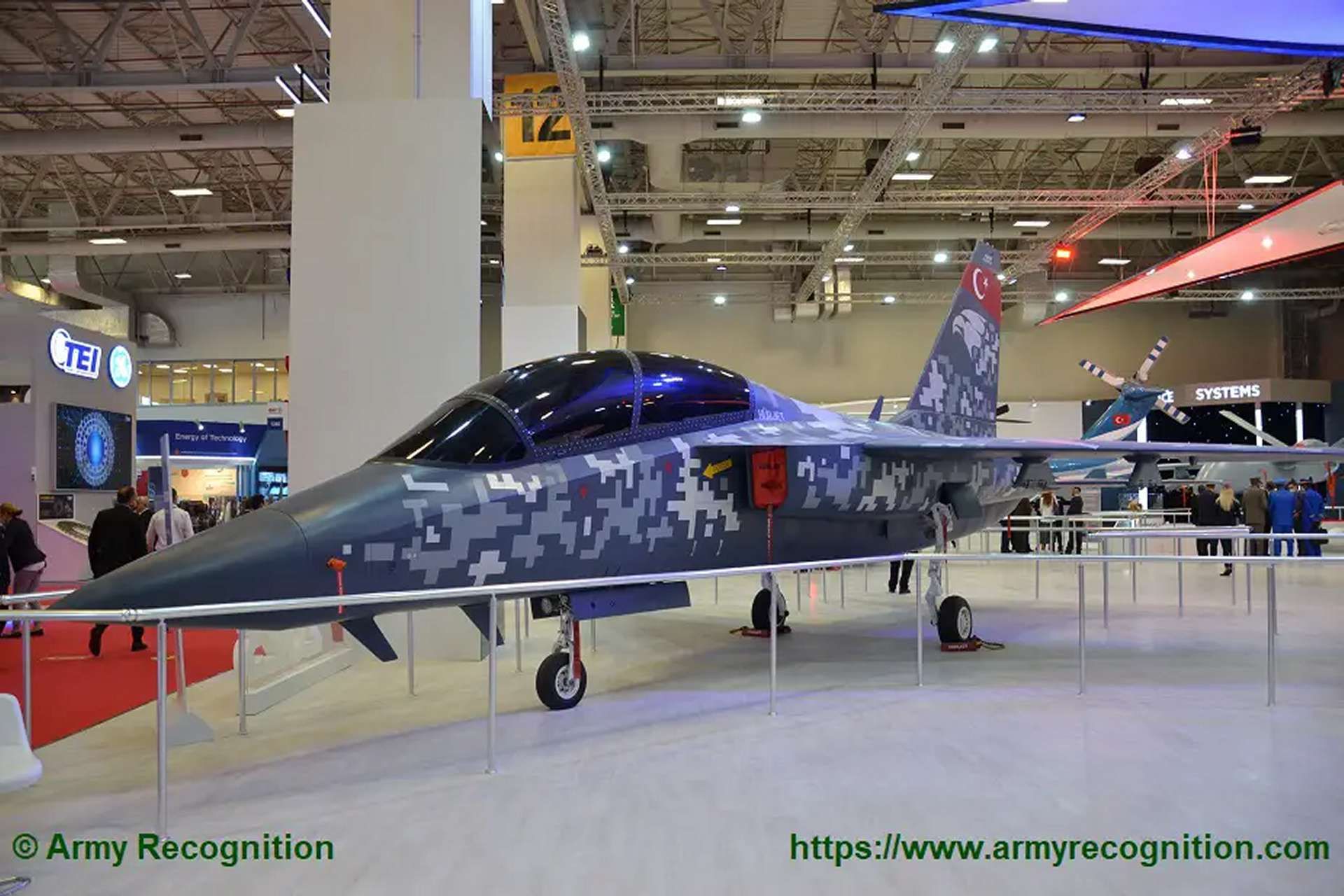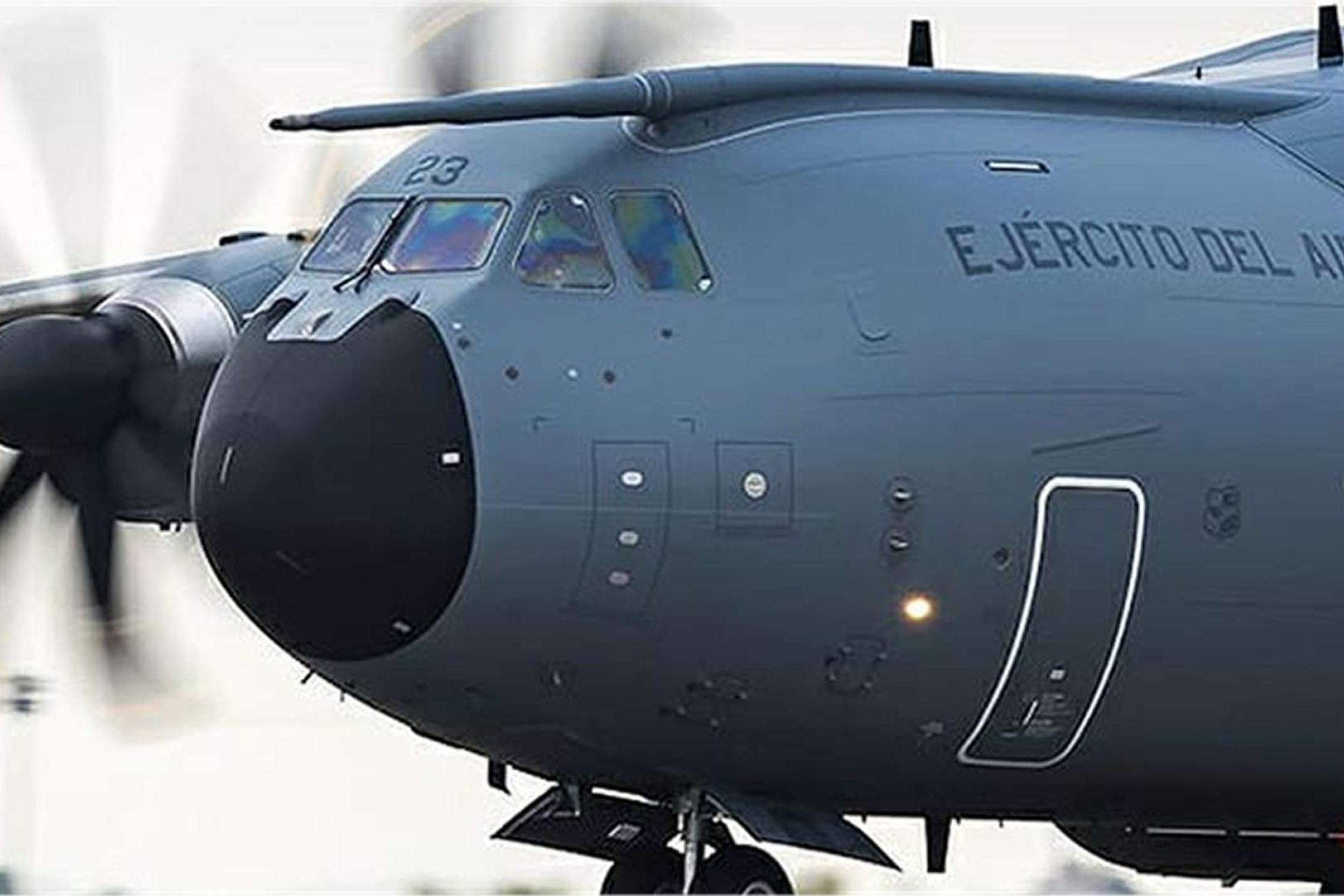Breaking News
Spain Could Trade A400M Cargo Aircraft for Turkish HÜRJET Jet Trainers.
Spain and Turkey are currently in advanced talks for a strategic exchange of military equipment. The proposal on the table includes an exchange of 24 Turkish HÜRJET training aircraft for six Spanish A400M transport aircraft. This development comes as Spain seeks to replace its Northrop Grumman F-5M training aircraft, whose operational life is set to end by 2030.
Follow Army Recognition on Google News at this link

Turkish Aerospace Industries HÜRJET Jet Trainer (Picture source: Army Recognition)
The HÜRJET prototype recently proved its capabilities by landing at the Torrejón Air Base in Madrid, where it is undergoing evaluations by the Spanish Air and Space Force. This move illustrates the advanced state of negotiations and shows a tangible commitment from Turkey to promote its aircraft on the international stage.
From a commercial perspective, this exchange seems beneficial for both nations. For Spain, it is an opportunity to modernize its training squadron while strategically placing some of its surplus A400Ms, which are less needed in the current configuration of their air force. For Turkey, this agreement would represent not only an expansion of its A400M fleet but also a chance to strengthen the international credibility of the HÜRJET as a viable choice for fighter pilot training.
Spain has previously attempted similar A400M transactions, having explored options with South Korea in 2019. Additionally, attempts to develop domestic solutions such as the AFJT by Airbus have been hindered by financial constraints and a lack of international interest, leading to collaborations with other industry players, notably Italy's Leonardo for the development of the M-346 trainer.
As a reminder, Spain, as one of the key participants in the Airbus consortium, played a significant role in the manufacture of the A400M aircraft. The Spanish government, led by José María Aznar, announced in June 2001 its intention to acquire 27 A400M transport aircraft, with an initial investment of 3.453 billion euros. This commitment was solidified on December 14, 2001, with the approval of a Memorandum of Understanding (MOU) for the Development, Production, and Initial Support of the A400M program. Over the years, despite some European countries reducing their orders or withdrawing from the program, Spain maintained its commitment, although the payment schedule for the 27 aircraft was extended by a year in 2003 without altering the total contribution.
However, the rising costs of the A400M project led Spain to increase its financial commitment, with contributions rising to 4.443 billion euros in 2009 and further to 5.493 billion euros in 2010. The economic crisis of 2013 forced Spain to reconsider its procurement plan, ultimately deciding to retain only 14 of the 27 ordered A400M aircraft and earmarking the remaining 13 for export. This decision paralleled Germany's similar reduction in its A400M fleet. Despite efforts to find buyers for the surplus aircraft, Spain struggled to sell the 13 remaining planes, especially as other nations were also trying to offload their excess A400Ms.
In October 2017, the Spanish Ministry of Defense announced a revised delivery schedule: the first 14 aircraft, reconfigured according to the new needs, would be delivered between 2016 and 2022, while the remaining 13 aircraft were postponed to between 2025 and 2030. This delay gave Spain some leeway to search for potential buyers, though none materialized. Moreover, in 2016, Spain signed an agreement with Airbus that included a penalty clause of 243 million euros should Spain cancel the remaining orders or fail to resell the surplus aircraft. This situation underlines the challenges Spain faces in managing its A400M fleet amid changing defense needs and economic constraints.
With 14 A400Ms currently in service and plans to increase this number to 17, Spain intends to put the remaining ten aircraft on the market. Furthermore, the Spanish Air and Space Force has recently initiated an upgrade program for its F-5Ms still in service, a project entrusted to the Israeli company IAI, aiming to extend the operational life of these aircraft until 2030.
This potential exchange between Spain and Turkey could serve as a model for other nations looking to optimize their resources while enhancing their air force capabilities. With implications extending well beyond the borders of both countries, this agreement could redefine strategic collaborations in European military aviation and beyond.
The Advanced Jet Trainer and Light Attack Aircraft HÜRJET, a single-engine tandem-seat aircraft, is equipped with modern avionics and high-performance features that make it essential for modern pilot training. Its superior performance characteristics allow it to excel in advanced jet training roles, meeting the critical needs of international and Turkish Air Force operations. The combat variant of the HÜRJET acts as a force multiplier on the battlefield, offering a wide range of mission capabilities and an extensive payload. This project began with the goal of replacing the aging T-38s used for advanced jet training and the F-5s employed by acrobatic teams, thus introducing a modern, high-performance multirole aircraft.
The HÜRJET is also designed to replace old jet trainers, many of which have been in service for over 20 years. With the increasing number of 5th generation aircraft like the TFX and F-35, the need for advanced jet trainers has grown due to their changing configurations. Turkish Aerospace initiated the HÜRJET Program to target the multirole aircraft market, leveraging its experience and skills in the cost-effective design and production of trainer and light aircraft systems. This initiative aims to meet both domestic and international requirements, offering a modern solution for pilot training and light attack roles.
The HÜRJET, measuring 13.6 meters in length, 9.5 meters in wingspan, and 5.1 meters in height, features a wing area of 25 square meters and a thrust capacity of 17,600 pounds. Its notable performance includes a range of 2,222 kilometers, a climb rate of 39,000 feet per minute, a service ceiling of 45,000 feet, and a maximum speed of 1.4 Mach. The aircraft can sustain turns up to 5.5 g and handle payloads up to 2,721 kilograms. The engine powering the HÜRJET is developed by the American company General Electric, specifically the F404-GE-102 model.

Airbus A400M Transport Aicraft (Picture source: Spain MoD)


























